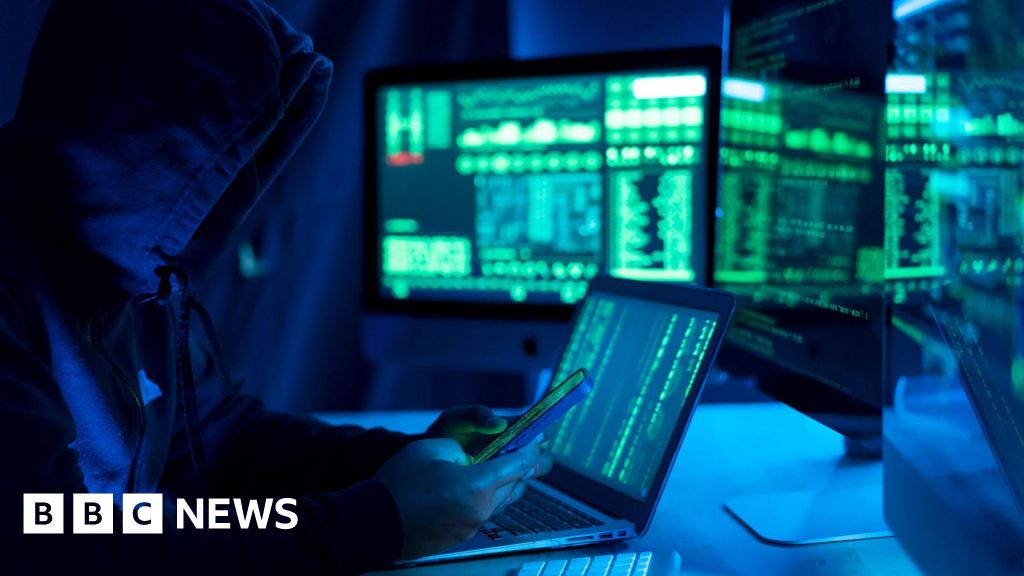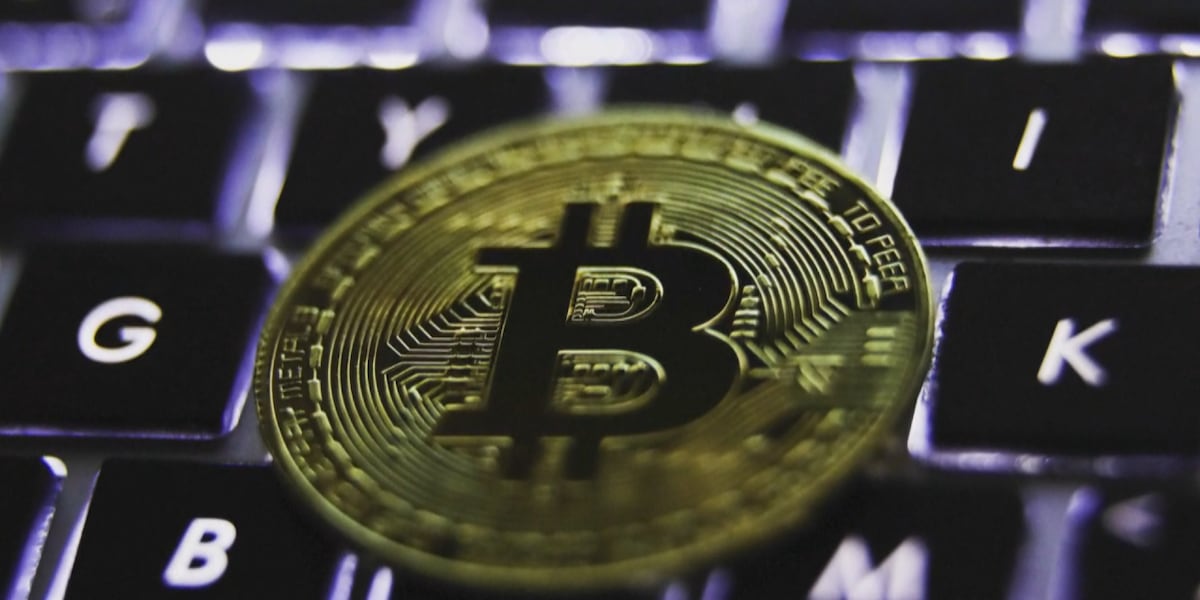Crypto
Houstonians lose millions in crypto investment scams, FBI says

HOUSTON, Texas (KTRK) — Houstonians have lost anywhere from $10,000 to $1 million per person in investment scams, oftentimes involving hard-to-recover cryptocurrency.
The FBI told 13 Investigates’ Kevin Ozebek investment schemes are becoming more sophisticated as overseas scammers use artificial intelligence and chatbots like ChatGPT to “generate communication in English in a way that’s relatable and not broken.”
“We find that even if the bad actors are located overseas, their ability to communicate with people in the United States – they can make it sound as if they’re in America or they can use these different tools to translate and figure out communication in order to really attract and lure in their victims,” Cindy Quintanilla, a forensic accountant with the FBI, said. “It’s getting a lot harder for victims or the common person to be able to decipher. ‘Oh, this isn’t real,’ or ‘this person doesn’t speak good English.’”
Victims reported losing $3.31 billion in investment scams across the U.S. last year, which was up 127% from 2021, when fraud complaints totaled $1.45 billion, according to the FBI. About $2.57 billion was lost in cryptocurrency investment scams alone last year, up 183% from 2021.
Quintanilla said she believes the scams are underreported, meaning the number of victims and economic loss is even greater.
“What makes this a unique type of scam and unprecedented is the combination of the number of victims, the volume, and the speed that the frauds are happening,” she said. “Many times, these victims don’t know they’re victims until one week, one month, or several months out after they’ve already sent money. And because of the way that cryptocurrency moves, the fact that it’s irreversible, time is of the essence, and so, the sooner that victims are able to report it, the better.”
Quintanilla said scammers will recruit victims through several methods, for example, making personal connections on dating websites or through text messages and then drain those victims of all their finances.
“They might say, ‘Hi, Sue.’ And then you respond by saying, ‘It’s not me, it’s someone else.’ And then the conversation begins,” she said. “They like to use a lot of the encrypted apps, such as Signal or WhatsApp. They’ll reach out to you via LinkedIn. They’re using social media and different applications to reach out to their victims, and that’s how they’re targeting people.”
SEE ALSO: Facebook scammers hack accounts, then solicit friends in private messages, in growing scheme
She said scammers will search social media before even reaching out to their victim to create a profile of their target.
“They’re able to identify what vulnerabilities that person has, whether it’s a need for a romantic partner, whether it’s a lost loved one, whether it is a need to put their kids through college or a financial instability,” Quintanilla said. “They’ll figure out what it is that their target is vulnerable to, and ultimately they’ll play on that and that’s how they’ll lure people in with a friendship, with a romantic interest or a promise to resolve their financial problems.”
She said once a scammer makes a connection, there are different directions they can take. In one scenario, she said a scammer might be quick to start talking about cryptocurrency and share how much money they’ve made, with promises of how much the victim can make through investment themselves.
The FBI says the most common age for scam victims was 30 to 49 years old and that anyone can fall victim to these scams, regardless of age, gender or educational background.
“Anyone can be a target because they are so sophisticated,” Christina Garza, a public affairs officer at the FBI’s Houston office, said. “The criminals behind these schemes are very sophisticated. This is what they do. They dedicate themselves to making you fall for it, so whatever it’s going to take on their end to make it as legit looking, as sophisticated looking, they’re going to invest that time. Why? Because if I can get a million dollars out of you, it was worth my time.”
SEE ALSO: Latino families who invested in alleged crypto scheme want justice
To help sell the scheme, Quintanilla said scammers will also create fake websites where they lure victims to log online and see their financial balance and how much these fake investments have grown or decreased.
“They look legitimate, where you can see purported gains, and these gains are fraudulent, and people are falling victim to it because they’re used to seeing that in the traditional finance space,” she said.
She added once the scammer realizes they’ve “completely dried out” the victim, they will tell them that their money is stuck or that they need to pay taxes or customs fees in order to release it.
To make the scam worse, Quintanilla said the FBI found that victims will turn to the internet for help and get scammed all over again by fake companies, promising to help them recuperate their money.
“What people should know is that once money is out in the blockchain and it’s moved, no one can return it to you unless they are the owners or hold the keys to the wallet where that cryptocurrency is,” she said. “Sometimes the victims are being re-victimized because they are paying fake companies – and they’re charging $10,000, $15,000, $20,000 for these reports, and victims are paying them out of desperation to be able to recoup their assets.”
Ultimately, Quintanilla said people should be wary of investing large sums of money with people they’ve never met in person.
“Never ever invest based exclusively on the advice of someone you only met online. Do your homework, do your research, do your independent research. Don’t click on links,” she said. “If it’s too good to be true, it’s probably a scam. If it’s a promise of high return on investments very quickly, it’s likely a fraud. Big red flags.”
SEE ALSO: Kidnapping scam uses artificial intelligence to clone teen girl’s voice, mother issues warning
She said the longer a victim takes to report the crime, the harder it is to recover the funds.
“What we find is initially the victim’s money will start out of an exchange of the United States, which are regulated. And ultimately, the subject will take the cryptocurrency. They’re laundering it. They’ll move it through several wallets, and then, they’ll cash it out at a foreign exchange. And so, sometimes there can be challenges,” she said.
What to do if you’re a victim
The FBI said shame is one reason people may not report when they’re a victim of this type of crime. However, the agency encourages victims to report it as soon as possible.
“We understand why there might be some shame around it, especially if you think, ‘Well, I should have known better,’” Garza said. “Anyone can become a victim regardless of your socioeconomic status or your education level, but don’t let this shame stop you. You have been a victim of a crime. Let the authorities know. Let us help. The sooner, the better. The sooner that you’ve realized that you’ve been scammed, report it immediately, because that gives the law enforcement at least that much ahead of time to try and get behind it.”
Victims can file an internet fraud report online at IC3.gov, where you should provide as much information as possible, including transaction details, phone numbers and any communication.
IC3.gov is also the FBI’s criminal complaint center that provides information on consumer alerts regarding internet schemes, as well as the trends they’re seeing.
“(The) overall message is for people to understand that cryptocurrency investments are a risky investment,” Quintanilla said. “They need to make sure that they’re doing their research, that they’re comfortable with the money that they’re putting in, that they’re not overextending themselves, and that they’re getting the proper advice from the right people before they make these type of investments, whether it’s through a connection that they met online or through a firm that they’re researching.”
For updates on this story, follow Kevin Ozebek on Facebook, Twitter and Instagram.
Contact 13 Investigates
Have a tip? A problem to solve? Send a tip below. If you don’t have a photo or document to include, just hit ‘skip upload’ and send the details. (On mobile? You can open our form by tapping here.)

Crypto
North Korean hackers account for 60% of all cryptocurrency stolen in 2024

North Korean hackers have stolen $1.34bn (£1bn) in cryptocurrency in 2024, accounting for nearly 60 per cent of the total amount stolen across the world, according to a new study.
A total of $2.2bn (£1.76bn) has been stolen from crypto platforms this year, marking a rise of 21 per cent, with crypto hacks by North Korean affiliates “becoming more frequent”, a study by blockchain analysis company Chainalysis said.
The amount stolen by North Korea-affiliated saw a 102 per cent increase in value from 2023, when an estimated $660.50m was stolen.
Isolated in the global market and reeling under international sanctions, the government in North Korea is accused of turning to crypto theft to fund state-sponsored operations and support its booming nuclear arsenal.
The report said that the US and international experts have assessed that Pyongyang uses the stolen crypto money to “finance its weapons of mass destruction and ballistic missiles programs”.
“Hackers linked to North Korea have become notorious for their sophisticated and relentless tradecraft, often employing advanced malware, social engineering, and cryptocurrency theft to fund state-sponsored operations and circumvent international sanctions,” the report said.

Some of these attacks appeared to be linked to North Korean IT workers who have been able to infiltrate crypto and other technology firms, the report added.
“These workers often use sophisticated Tactics, Techniques, and Procedures (TTPs), such as false identities, third-party hiring intermediaries, and manipulating remote work opportunities to gain access,” it said.
The research comes at a time when the value of bitcoin, the world’s biggest and best-known cryptocurrency, has rallied to record levels ahead of US president-elect Donald Trump‘s second administration. This week Mr Trump reiterated that he plans to create a US strategic reserve of bitcoin similar to its strategic oil reserve, stoking the enthusiasm of crypto bulls.
The US Department of Justice (DoJ) has launched a crackdown on North Korean hackers engaged in crypto theft in recent years. It indicted 14 North Korean nationals who obtained employment as remote IT workers at US companies and were accused of generating more than $88m by stealing proprietary information and extorting their employers.
In one of the most significant incidents of crypto theft, a North Korea-affiliated hack targeted the Japanese cryptocurrency exchange DMM Bitcoin. The attack led to the theft of around 4,502.9 Bitcoin, worth $305m at the time.
Crypto
North Korean hackers stole $1.3bn in crypto this year, report says

A total of $2.2bn (£1.76bn) in cryptocurrencies has been stolen this year, with North Korean hackers accounting for more than half that figure, according to a new study.
Research firm Chainalysis says hackers affiliated with the reclusive state stole $1.3bn of digital currencies – more than double last year’s haul.
Some of the thefts appear to be linked to North Korean hackers posing as remote IT workers to infiltrate crypto and other technology firms, the report says.
It comes as the price of bitcoin has more than doubled this year as incoming US president Donald Trump is expected to be more crypto-friendly than his predecessor, Joe Biden.
Overall, the amount of cryptocurrency stolen by hackers in 2024 increased by 21% from last year but it was still below the levels recorded in 2021 and 2022, the report said.
“The rise in stolen crypto in 2024 underscores the need for the industry to address an increasingly complex and evolving threat landscape.”
It said the majority of crypto stolen this year was due to compromised private keys – which are used to control access to users’ assets on crypto platforms.
“Given that centralised exchanges manage substantial amounts of user funds, the impact of a private key compromise can be devastating”, the study added.
Some of the most significant incidents this year included the theft of the equivalent of $300m in bitcoin from Japanese cryptocurrency exchange, DMM Bitcoin, and the loss of nearly $235m from WazirX, an India-based crypto exchange.
The US government has said the North Korean regime resorts to cryptocurrency theft and other forms of cybercrime to circumvent international sanctions and raise money.
Last week, a federal court in St Louis indicted 14 North Koreans for allegedly being part of a long-running conspiracy aimed at extorting funds from US companies and funnelling money to Pyongyang’s weapons programmes.
The US State Department also announced that it would offer a reward of up to $5m for anyone who could provide more information about the alleged scheme.
Crypto
New Opportunities for Businesses with Cryptocurrency Wallets | Fingerlakes1.com


Cryptocurrency wallets are no longer a niche tool for tech enthusiasts, they’re quickly becoming a must-have for businesses looking to adapt and grow.
These digital wallets allow companies to store, manage, and accept cryptocurrencies securely, offering a host of advantages for businesses worldwide.
With the rise of blockchain technology, tools like a crypto wallet for your business are helping organizations unlock new opportunities for speed, security, and global expansion.
In this article, we’ll break down how cryptocurrency wallets can transform businesses, highlighting their features, benefits, and real-world applications.
Key Features of Cryptocurrency Wallets for Businesses
Security:
Cryptocurrency wallets use advanced blockchain technology to protect against fraud, hacking, and data breaches.
Each transaction is recorded on an immutable ledger, ensuring transparency and minimizing the risk of manipulation.
For businesses, this translates to a higher level of trust and reduced exposure to fraud.
Efficiency:
Speed is everything in today’s business world.
With crypto wallets, transactions are processed much faster compared to traditional banking methods.
No waiting days for wire transfers, payments are completed in minutes, whether it’s across town or across the globe.
Global Access:
Unlike traditional payment methods, cryptocurrency wallets aren’t restricted by borders or currency conversions.
Businesses can seamlessly operate in international markets, offering customers an easy and affordable way to pay without dealing with exchange rates or high transaction fees.
Opportunities Provided by Crypto Wallets
The growing popularity of cryptocurrency isn’t just hype, it’s backed by numbers.
As of 2024, approximately 562 million people own some type of cryptocurrency, which represents about 6.8% of the global population, according to a recent survey by Triple A.
For businesses, these millions of crypto wallets unlock a wide range of opportunities:
Expanding Customer Base: Tech-savvy customers and international audiences are increasingly turning to cryptocurrencies for their purchases.
Businesses that accept crypto payments can attract a wider audience, including customers in regions with limited access to traditional banking systems.
Cost Savings: Traditional payment processors and credit card networks come with hefty transaction fees.
Cryptocurrency payments, on the other hand, have significantly lower fees, especially for international transactions.
Over time, these savings can make a real impact on a company’s bottom line.
Revenue Growth: By accepting cryptocurrencies, businesses can tap into a growing market segment and create new revenue streams.
Whether it’s Bitcoin, Ethereum, or stablecoins, crypto acceptance positions businesses as forward-thinking and innovative.
Financial Independence: Crypto wallets allow businesses to operate independently of banks and intermediaries.
Companies gain full control over their finances and can send or receive payments anytime, anywhere, without relying on third-party approval.
Use Cases for Businesses
Cryptocurrency wallets are already transforming industries, helping businesses reduce costs, improve efficiency, and attract new customers.
Here are a few specific examples:
- E-commerce and Online Services: Online retailers are increasingly adopting crypto wallets to reach global customers and reduce transaction fees. By accepting cryptocurrencies, e-commerce platforms eliminate middlemen and offer faster, cheaper payments.
- Gaming and Entertainment: The gaming industry has embraced cryptocurrency as a payment method for in-game purchases, subscriptions, and digital goods. Crypto wallets offer gamers a seamless way to pay while enabling businesses to attract a tech-savvy audience.
- Forex and Trading Platforms: Crypto wallets are a natural fit for forex and trading businesses, allowing them to accept and process digital assets quickly and securely. This improves liquidity and gives traders more flexibility with their investments.
Real-World Case Study:
In 2014, large ecommerce retail Overstock.com started accepting crypto payments and they then reported that 5.6% of all their sales for the following year were attributed to crypto.
By removing transaction barriers and offering a flexible payment option, they successfully expanded their global reach and boosted sales.
Conclusion
Cryptocurrency wallets are opening up new opportunities for businesses to grow, adapt, and thrive in a digital-first world.
From enhanced security and cost savings to faster transactions and global accessibility, the benefits are hard to ignore.
By adopting a reliable crypto wallet for your business, you’re not just staying ahead of the curve, you’re setting your company up for long-term success.
With crypto adoption on the rise, there’s never been a better time to explore the future of payments.
This content is brought to you by the FingerLakes1.com Team. Support our mission by visiting www.patreon.com/fl1 or learn how you send us your local content here.
-

 Politics1 week ago
Politics1 week agoCanadian premier threatens to cut off energy imports to US if Trump imposes tariff on country
-
/cdn.vox-cdn.com/uploads/chorus_asset/file/25782636/247422_ChatGPT_anniversary_CVirginia.jpg)
/cdn.vox-cdn.com/uploads/chorus_asset/file/25782636/247422_ChatGPT_anniversary_CVirginia.jpg) Technology1 week ago
Technology1 week agoInside the launch — and future — of ChatGPT
-
/cdn.vox-cdn.com/uploads/chorus_asset/file/25789444/1258459915.jpg)
/cdn.vox-cdn.com/uploads/chorus_asset/file/25789444/1258459915.jpg) Technology6 days ago
Technology6 days agoOpenAI cofounder Ilya Sutskever says the way AI is built is about to change
-

 Politics6 days ago
Politics6 days agoU.S. Supreme Court will decide if oil industry may sue to block California's zero-emissions goal
-
/cdn.vox-cdn.com/uploads/chorus_asset/file/25546252/STK169_Mark_Zuckerburg_CVIRGINIA_D.jpg)
/cdn.vox-cdn.com/uploads/chorus_asset/file/25546252/STK169_Mark_Zuckerburg_CVIRGINIA_D.jpg) Technology7 days ago
Technology7 days agoMeta asks the US government to block OpenAI’s switch to a for-profit
-

 Politics1 week ago
Politics1 week agoConservative group debuts major ad buy in key senators' states as 'soft appeal' for Hegseth, Gabbard, Patel
-

 Business5 days ago
Business5 days agoFreddie Freeman's World Series walk-off grand slam baseball sells at auction for $1.56 million
-
/cdn.vox-cdn.com/uploads/chorus_asset/file/23951353/STK043_VRG_Illo_N_Barclay_3_Meta.jpg)
/cdn.vox-cdn.com/uploads/chorus_asset/file/23951353/STK043_VRG_Illo_N_Barclay_3_Meta.jpg) Technology5 days ago
Technology5 days agoMeta’s Instagram boss: who posted something matters more in the AI age




















